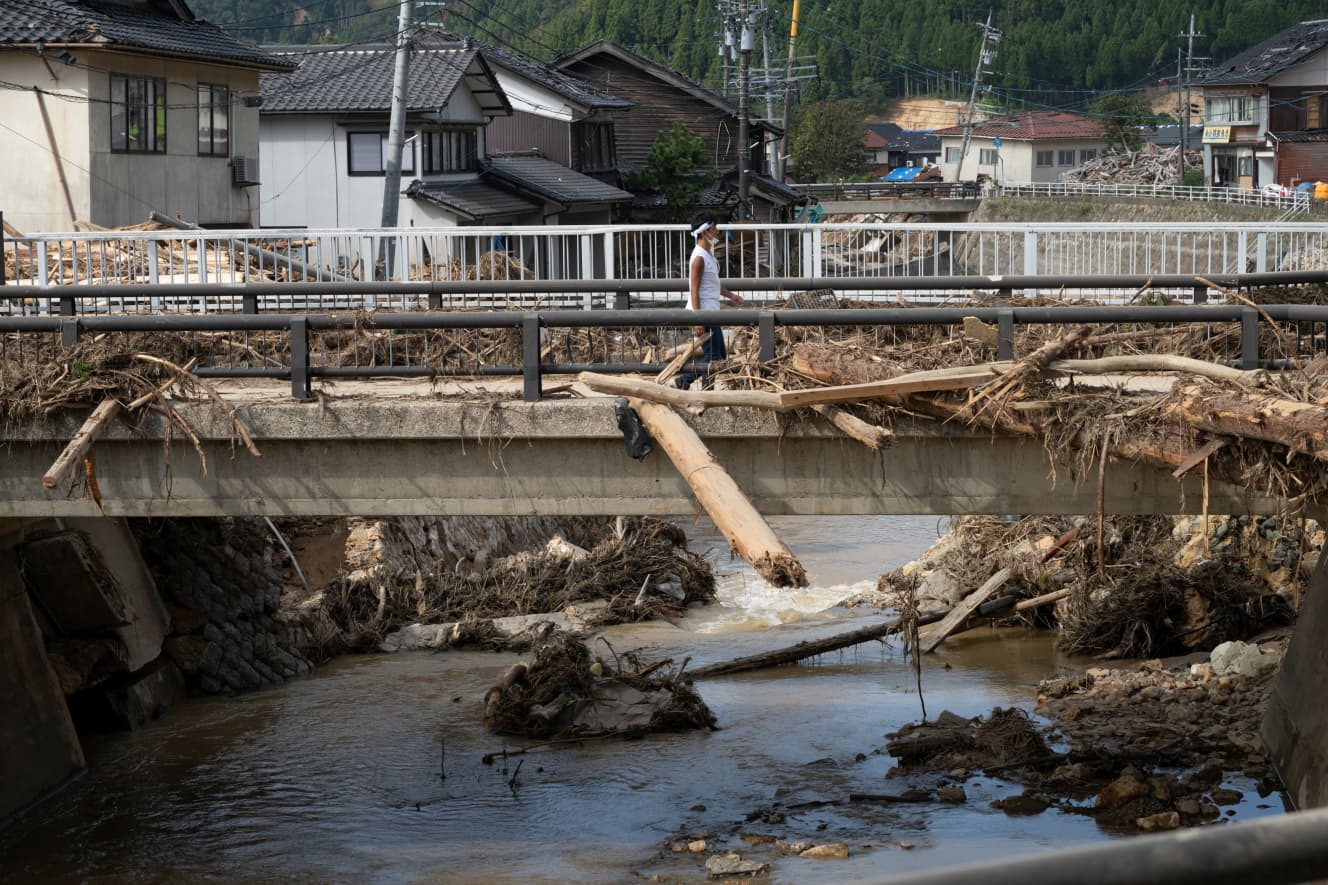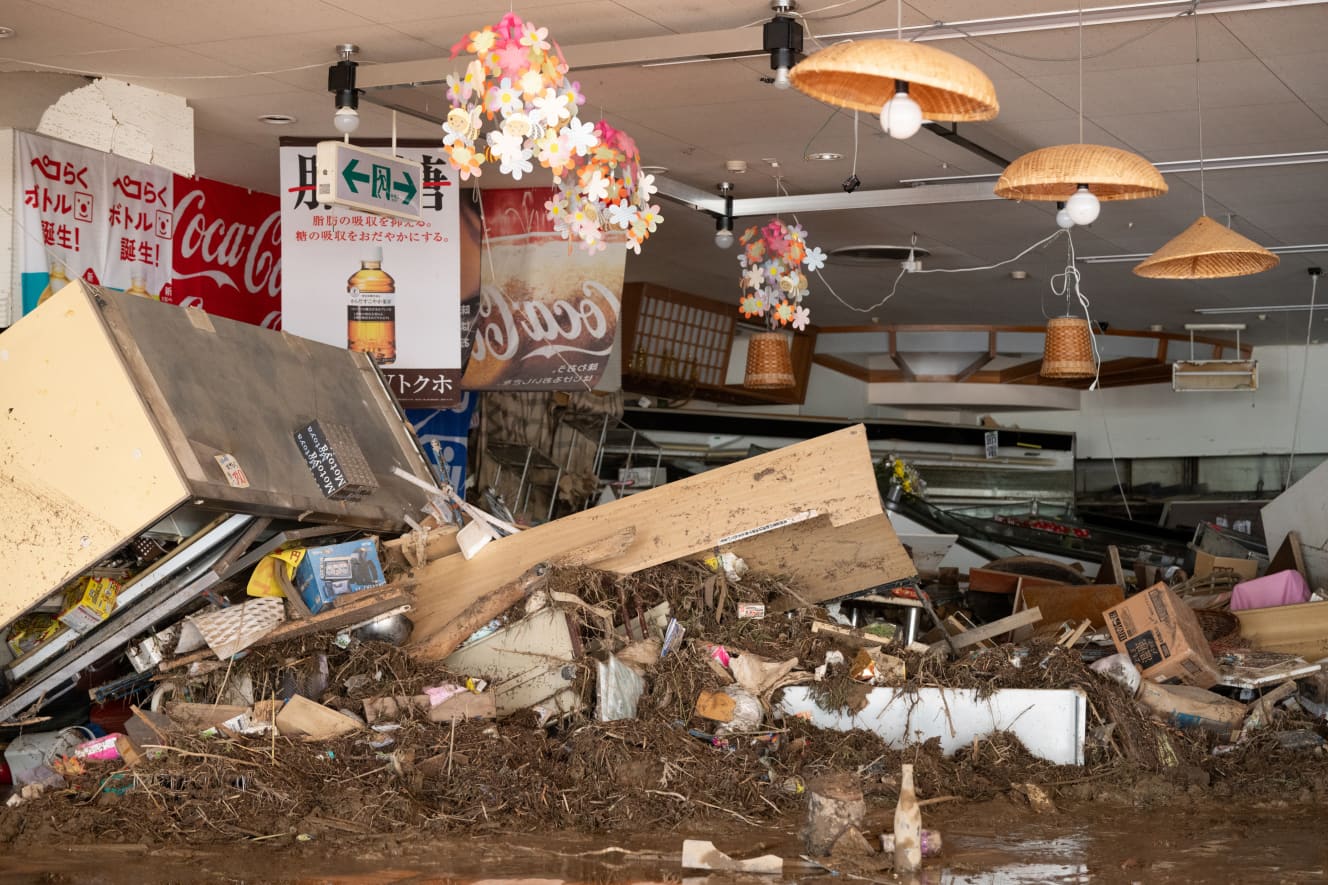14-Year-Old Swept Away and Over 10 Dead – Astonishing Photos Captured!
A 14-year-old junior high school girl was swept out to sea, among 14 victims (as of October 7, the damage remains the same) of the Noto heavy rain. About three weeks have passed since it began on September 21, yet more than 2,000 households are still struggling with water outages, and there is no clear timeline for complete recovery.
Our magazine’s photographer visited the disaster-stricken area, where collapsed houses and crushed cars are scattered. What he witnessed was a reality that was hard to believe.
“Originally, this area was farmland. However, since that day, the landscape has completely changed.”
The resident, who spoke with a heavy heart, lives in Kutegawa, Wajima City, Ishikawa Prefecture, which was affected by the disaster. The town is just a few minutes’ walk from the coast, with the Tsukada River flowing through it. During the heavy rains in September, the Tsukada River flooded. Along the riverbank, trees that had been swept away and mud-covered cars lay in a tragic state. Moving downstream, there were remnants of houses completely swept away, likely consumed by the raging waters. This was the site of the home of the middle school girl whose body was found off the coast of Fukui.
Legs sinking into the water
The photographer’s next destination was the Otani area along the coastline of Suzu City. Nearby residents shared their thoughts.
“This river is famous for its koi nobori (carp streamers) crossing. I never imagined the mountain right next to it would collapse.”
The river the residents referred to is the Suzu Otani River, which flows through the area. There were no signs of flooding in the river, but the mountainside to the east was severely eroded. It is likely that a large landslide had occurred. The surrounding area was covered in a massive amount of earth and debris, with many houses having their first floors completely buried.
In the Niae district of Suzu City, this town was the filming location for the NHK morning drama “Mare,” which aired from March to September 2015. Like the Otani area, the surroundings were also filled with sediment, making it difficult to walk as one’s legs sank into the muck.
“You can’t go any further from here.”
A resident involved in the cleanup called out to the photographer. The national road was cut off, making it impassable.
Debris and driftwood caught on breakwaters and bridge pillars, along with collapsed houses. What the photographer witnessed was the harsh reality of the disaster-stricken area. The devastation made it clear that significant time would be needed for recovery.










PHOTO: Kenji Natsume
